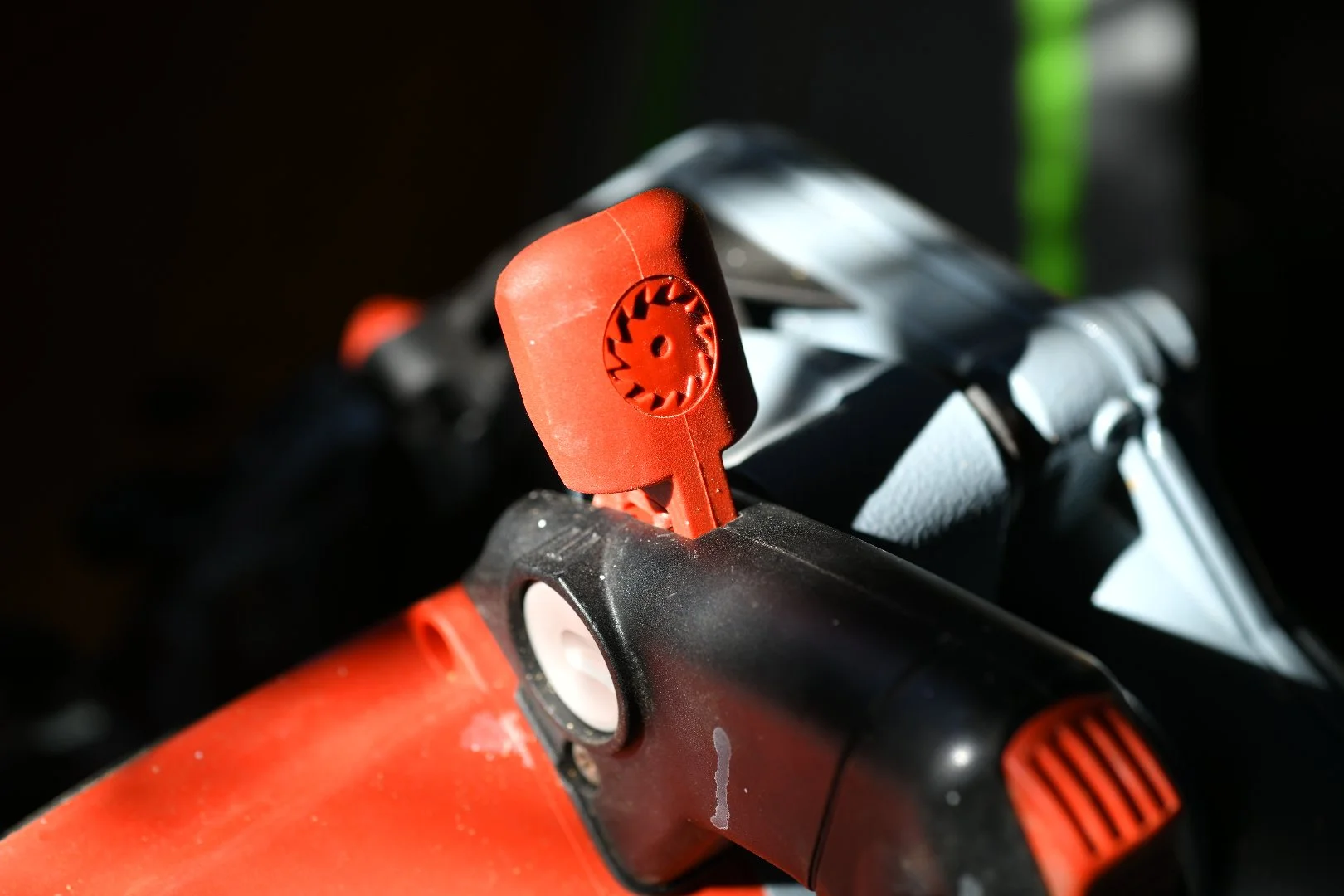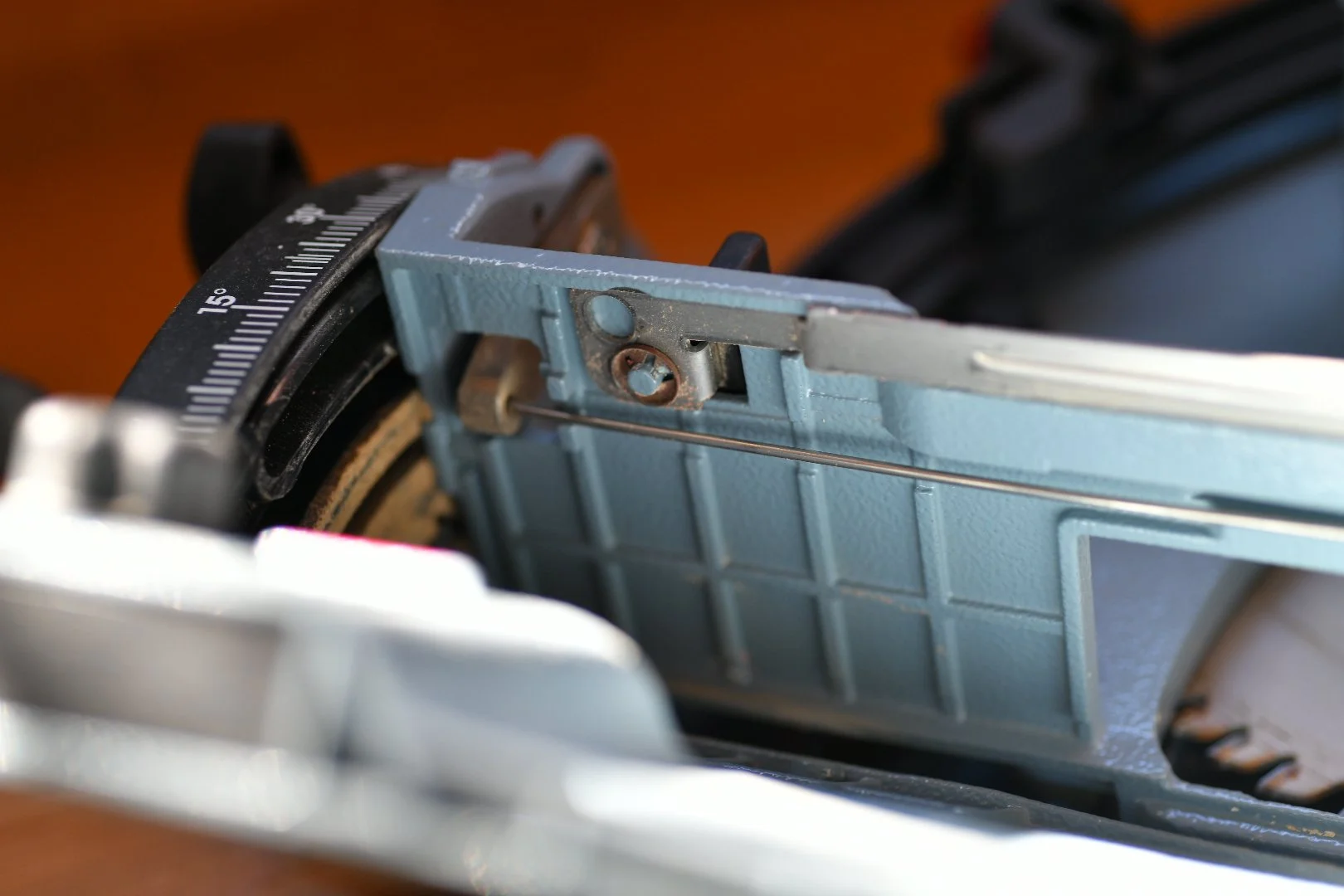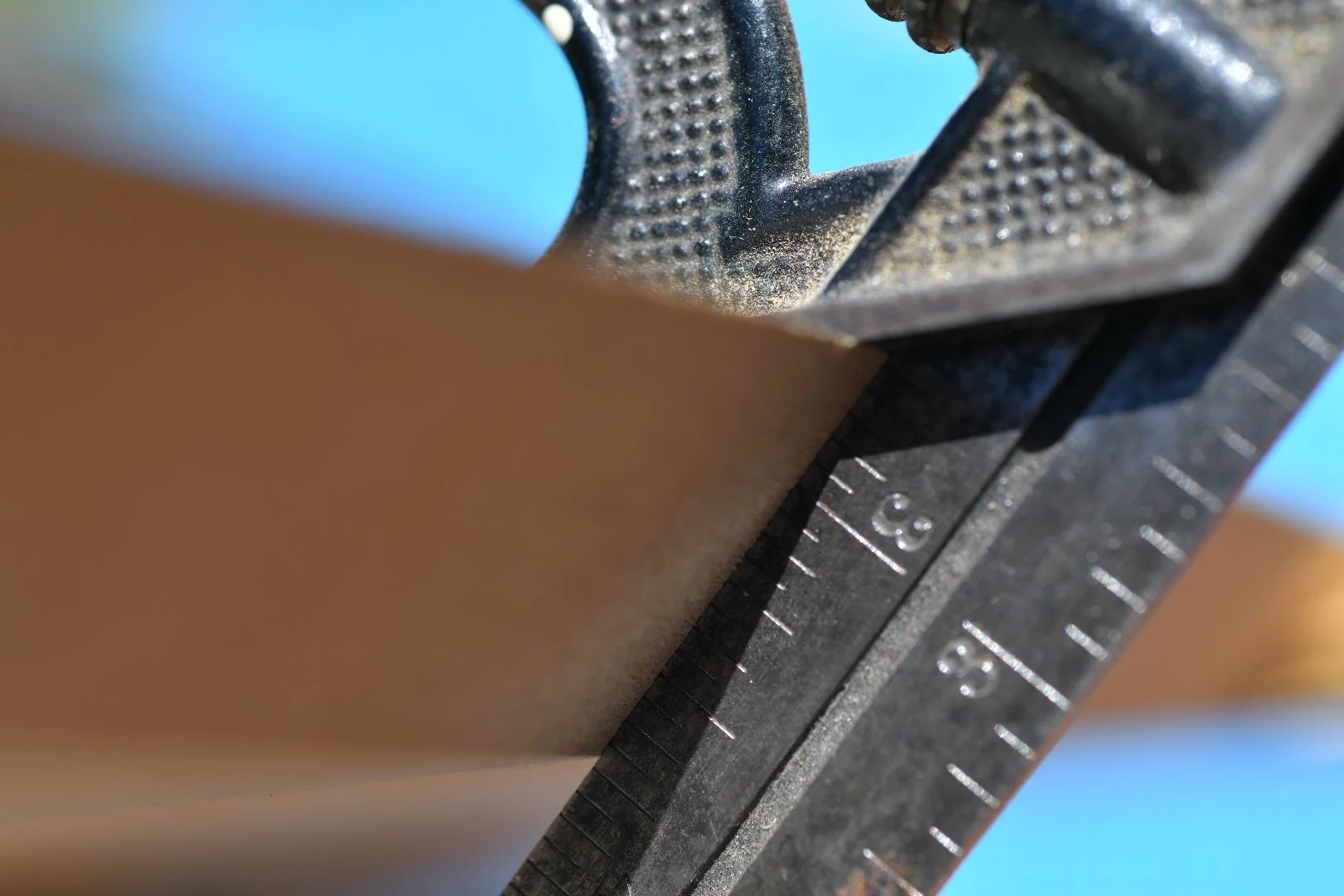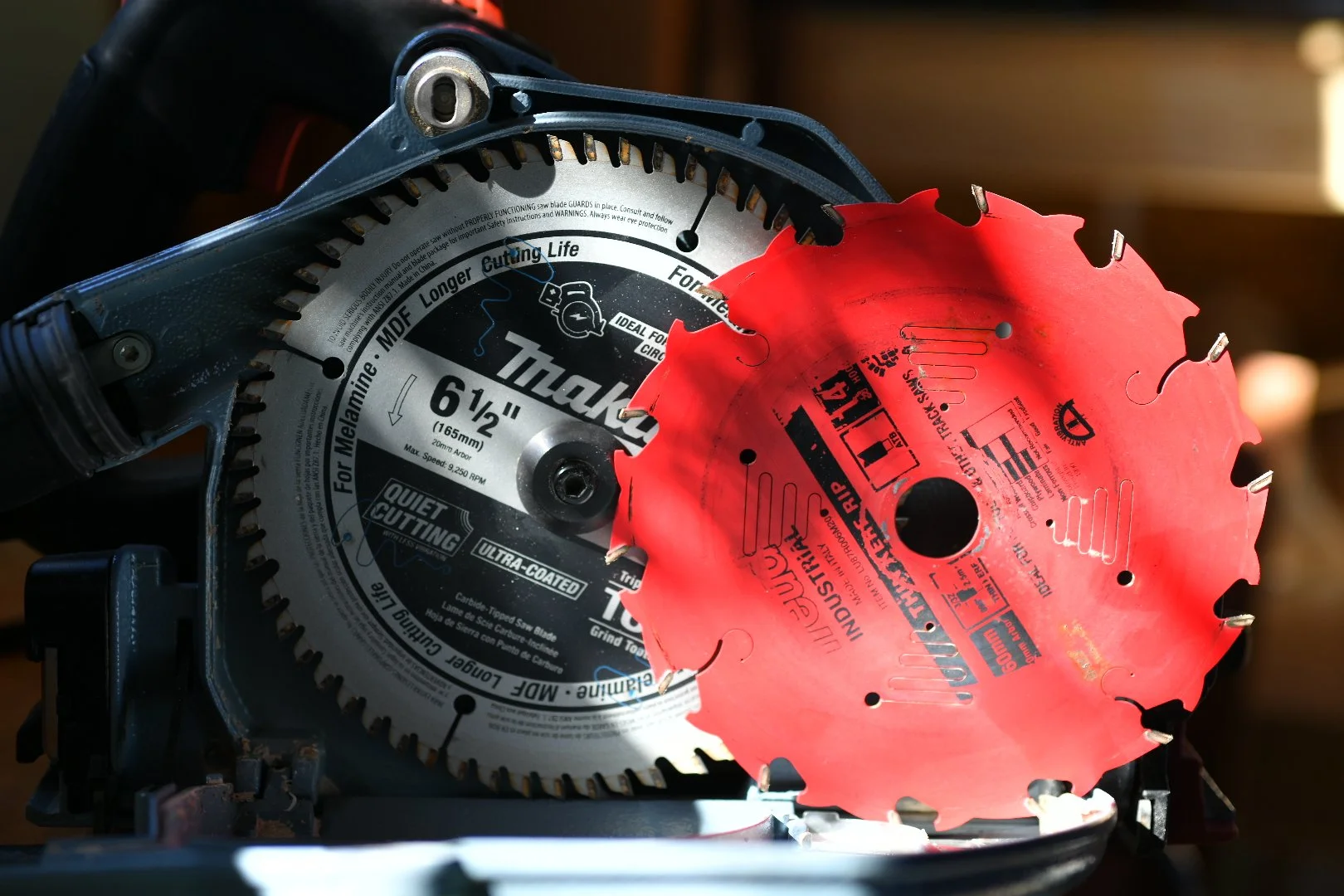Should I Buy a Track Saw? My Long-Term Review of Owning and Using the Mafell MT 55 cc
Mafell MT55cc resting on a Festool track
Mafell MT55cc Specifications
Cutting depth at 0°: 0 – 57 mm
Cutting depth at 45°: 0 – 40.5 mm
Tilt range: –1° to +48°
Saw blade diameter: 160–162 mm
No-load speed: 3 600 – 6 250 rpm
Power input: 1 400 W
Motor type: Universal (Cuprex)
Voltage / Frequency: 230 V / 50 Hz or 120 V / 60 Hz (region dependent)
Weight: Approx. 4.7 kg
Scoring function: Yes, up to 2.5 mm depth
Compatible guide rails: Mafell F-series and other systems (Festool, Makita)
Standard Equipment Included
MT55cc saw unit • TCT blade (162 × 1.2/1.8 × 20 mm, 48 teeth) • 5 mm Allen key • 4 m mains cable • T-MAX Systainer case
Intro
Mafell MT55cc on Festool track
My MT55cc owes me nothing. I’ve made a ton of money with it. In eight years of hard use, it’s never given me a problem or let me down.
When I first started my business, this tool was at the top of my list. I had used different models while working for other craftsmen and knew this would be an important piece of gear that would make a real difference in the way I worked.
I’ve used this track saw on almost all of my professional projects since 2017. It’s an unstoppable straight-line machine. Check out this built-in where I used it extensively for breaking down plywood and anywhere I needed a perfectly clean cut.
Nobody who needs a track saw ever regrets buying one—unless it’s collecting dust on your shop shelf.
Design & Build
This is a precision-built tool that’s made to last. Adjustments for cutting depth, bevel, and blade changes have all been thoughtfully designed.
Blade changes: push the button on the left side of the handle and lift the red lever. The guard releases and exposes the blade, which is already locked internally—no extra spindle-lock needed while you use the attached Allen key.
Depth adjustment: pinch the lever and slide to the number; it locks positively and changes depth in seconds. This model uses metric numbering—“I’ll never accept a foreign ruler.”
Scoring feature: flip the little black lever behind the handle to set the blade to ~1/16″ depth to prevent tear-out on fragile surfaces.
Bevel mechanism: the front guide links to the rear via a small rod, so tightening up front also locks the rear. That keeps cuts clean because the blade won’t skew a half-degree at the back end.
Tracks: Mafell’s one-piece metal connector joins rails with a basic flat-head screwdriver. The MT55 also rides on Makita and Festool tracks. If you forget your Mafell rails (like I did once in Maine), you can grab a Festool rail locally and keep working.
I bought the European version and swapped the plug for use in the Americas. It didn’t bother the Cuprex motor; it’s still running great. The cord is supple and mostly stays out of the way.
Ease of Use / In the Field
Setup is simple: support your material, set the depth, drop the rail, and cut. Depth and bevel accuracy are excellent. Dust collection is great, though I might give Festool a slight edge depending on the vacuum. I use the Festool CT MIDI L with mine and have cut MDF (See my BLOG post on MDF) next to a Steinway grand piano with no dust issues.
All these tools are noisy and will damage your hearing over time. If you’ve been in the trades a while, you may already have a permanent ring in your ears. Jokes aside—always use ear and eye protection, especially when the boss is around.
Cut Quality & Performance
Choose the right blade for the material. The stock 49-tooth blade is great for most tasks and leaves a smooth, glue-ready edge. Don’t rip piles of hardwood with it—it’ll dull quickly.
For ripping 4/4 to 8/4 hardwood, the Mafell 15T rip blade is outstanding—fast and clean. The Freud 14T is okay at about half the price and roughly 85 percent of the performance. Makita’s 56T general-purpose blade works well but doesn’t last as long as the Mafell 49T and leaves a slightly rougher edge. Makita’s 60T melamine/MDF blade is a strong option for MDF, leaving a paint-ready surface (after breaking edges with sandpaper).
Keep rail undersides and work surfaces clean. Fine dust can cause drift. Clamp rails when joining two sections or cutting slick materials like melamine. For cuts under ~55″ on clean surfaces, you can often skip clamps with firm downward pressure.
In my hands, cut quality is best with Mafell, followed closely by Festool, with Makita a strong third. Use Makita if you share your tools. Use Mafell if you’re working at a very high level. Use Festool if you want precision and bragging rights.
Maintenance & Durability
I’ve used all three: Mafell, Festool, and Makita. None has failed me. Mafell and Festool feel like finely tuned instruments; Makita is a simpler, tough workhorse. The finely tuned saw might need service first simply because they’re built to tighter tolerances.
Warranties (North America): Mafell 1 year • Festool 3 years • Makita 3-year limited (though Makita tools rarely break).
What I Like
Cutting a perfectly straight line without hauling a job site table saw is freedom. For its intended uses, especially sheet goods, a track saw will outperform a table saw. The only place a table saw still wins is ripping tiny or very short pieces.
Track saws also make edge-gluing boards easy: you get jointer-worthy edges at any angle. And yes, showing up with a Systainer (green or red) gets you taken seriously.
I’ve never regretted buying this tool—because I use it.
What Could Be Better
These saws are expensive, and the tracks add up. Rails are where the budget really goes. If you can, own two 55″ tracks — that’ll cover most situations without dragging a 10-foot section through doorways. Once you start needing longer runs, the price stacks up fast, and joining tracks isn’t always seamless no matter what the marketing says.
The saw itself is nearly flawless, but the ecosystem is costly. Every accessory feels like it was priced for a different currency. Replacement blades, clamps, angle guides — they’re all great, but none of it’s cheap. And while Mafell quality is exceptional, parts availability in the U.S. isn’t always instant. If you’re the kind of carpenter who breaks things or misplaces track connectors, expect some waiting or importing.
Still, that’s the tradeoff: near-perfect performance comes at a price — both in cash and patience.
Who It’s For
If you build at least two pieces of furniture a year, it’s worth it—especially if you don’t own a 6′ jointer. Building your own home? Installing custom closets? Buy one. If you can afford it, a track saw belongs in your core tool set.
You can buy a quality track saw for around $500 now—about half of what they used to cost. There’s not much reason left to skip it.
Alternatives
Makita SP6000J1: reliable and affordable.
DeWalt DWS520K: rugged jobsite choice.
Festool TS 55: precise, refined, widely supported.
Mafell MT55cc: premium, ultra-precise, harder to find service in North America.
These links help support the site at no extra cost to you.
Verdict
I’ve never met anyone who regretted buying a track saw. I’ve only ever heard people say, “I need a track saw.” Sometimes there’s a mental block—maybe it’s price, maybe it’s permission. Get the tool that makes the job more pleasurable and move on.
I personally use the Mafell MT55cc, and it’s been bulletproof for me, but if I were buying new today, I’d recommend the Festool TS 55 F for most people. Festool has better warranty coverage in North America, easier access to parts and blades, and a huge selection of compatible accessories that you can find almost anywhere.
If mine broke tomorrow, I’d buy another one the same day.
Recommended Gear / Affiliate Links
(These links help support the site at no extra cost to you.)
Festool (Saw, Vacuum, Blades)
Festool TS 55 F Plunge-Cut Track Saw Kit – excellent dust control, accuracy, 3-year warranty, and huge dealer network.
Festool CT MIDI I or CT MIDI L Dust Extractor – compact, quiet, and the perfect pairing for any track saw.
Festool 160 mm Fine-Cut Blade (≈48T) – produces glue-ready edges for sheet goods.
Festool 160 mm Rip Blade (16T) – faster, cleaner rips in hardwoods.
Makita (Value Saw & Blades)
Makita SP6000J1 Track Saw Kit – best value overall, tough and reliable.
Makita 56T General-Purpose Blade – great all-around performer.
Makita 60T Melamine / MDF Blade – crisp, chip-free edges on laminates and MDF.
Freud 160mm Rip Blade (14T)- Great value blade for ripping hardwoods.
Festool gear tends to hold its resale value better than any other brand in this category — which can pay you back later when it’s time to upgrade.
Both the Makita 60 tooth blade and The Diablo 14 tooth rip blade shown here. Both of these blades fit the Mafell.
My Ask
I’m not sponsored, and I don’t want to be. Everything you read here comes from my own experience — the good, the bad, and the occasional mistake. If you found this useful and want to help me keep building, you can “donate a nail” by using one of my links or chipping in a few bucks to support the site. Every bit helps keep this work going and lets me keep sharing what I’ve learned without having to answer to anyone but you.








